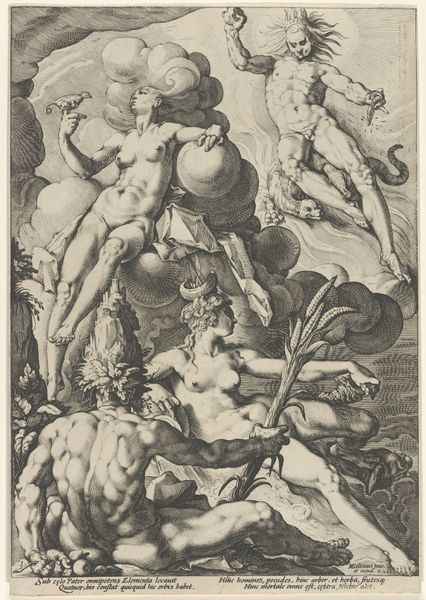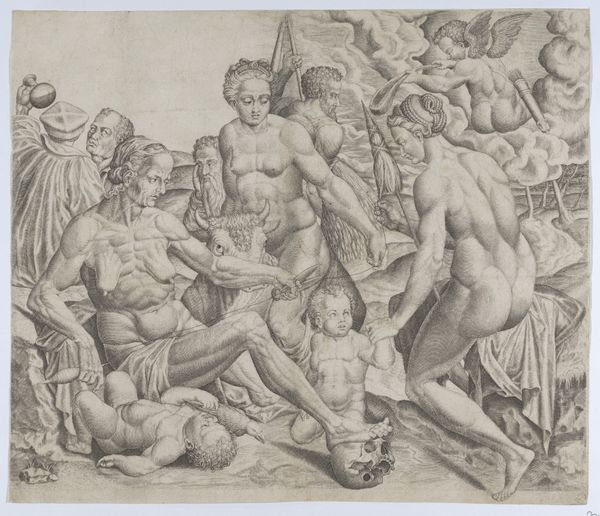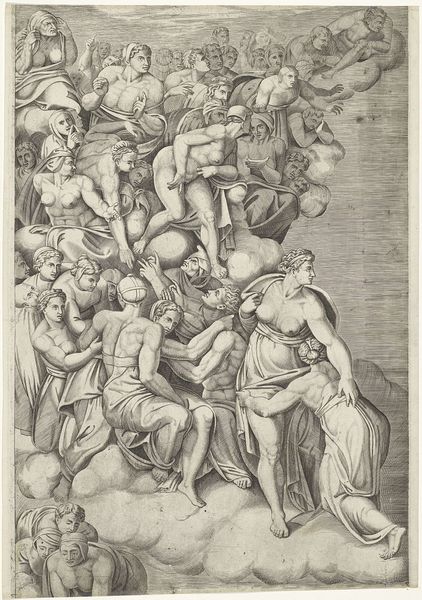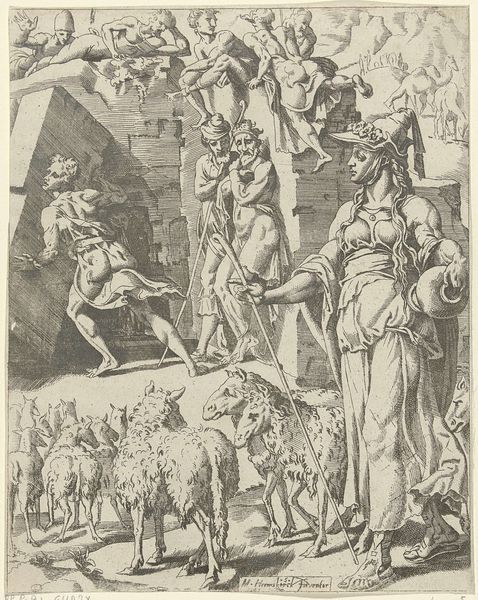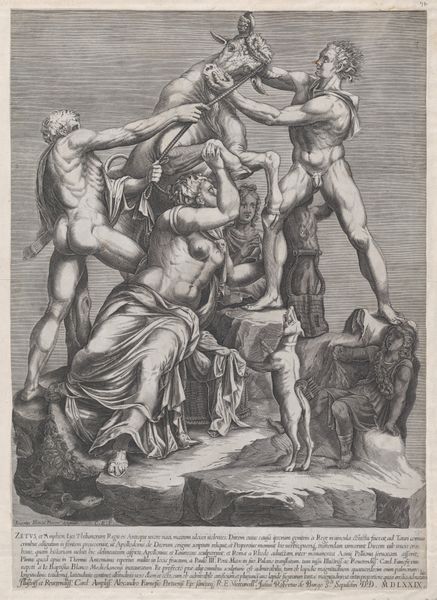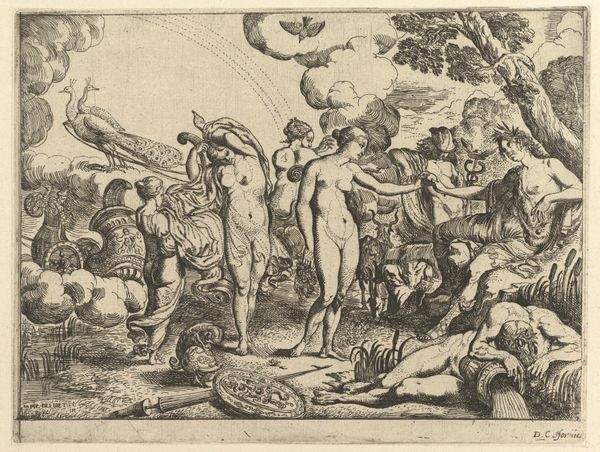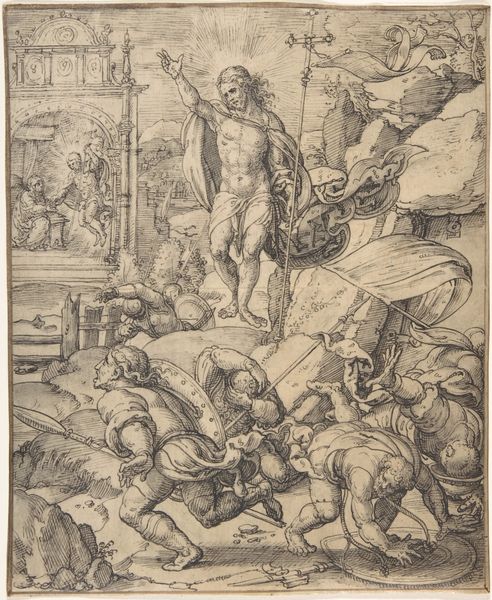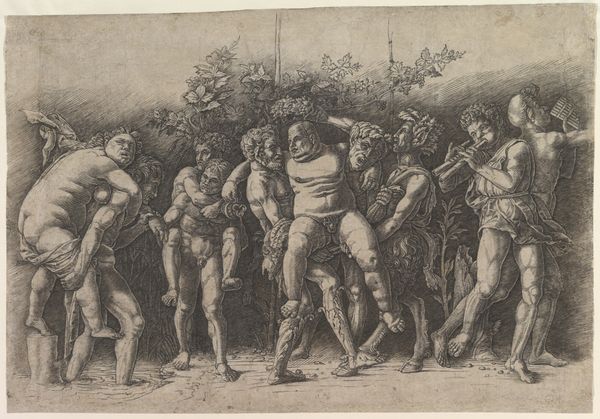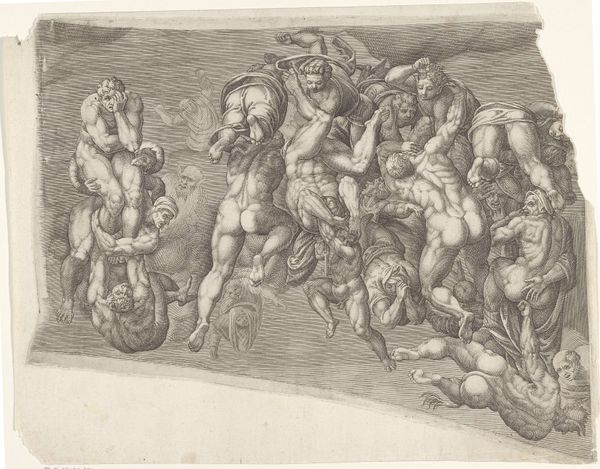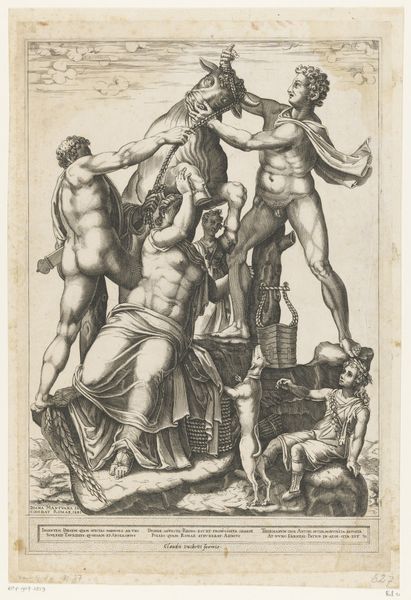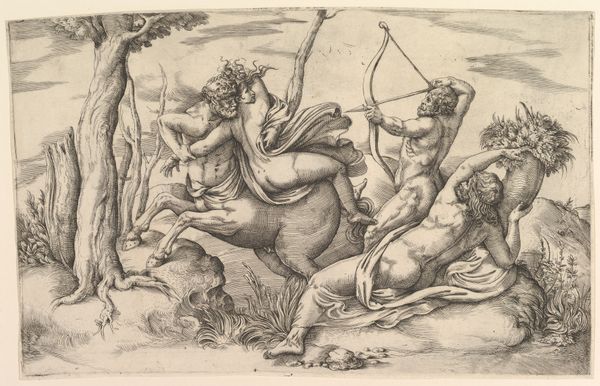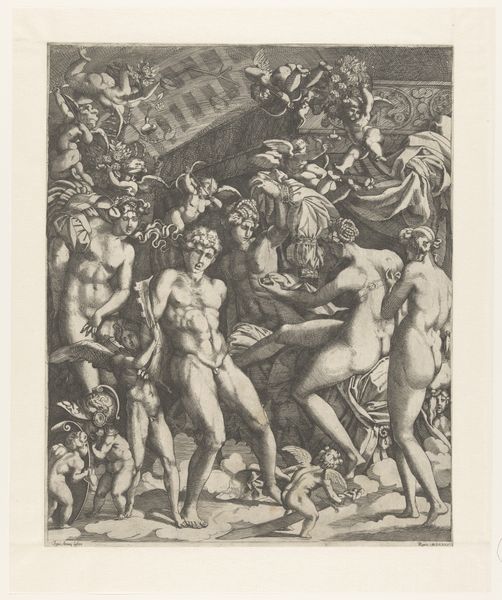
drawing, print, engraving
#
drawing
#
ink drawing
# print
#
mannerism
#
female-nude
#
child
#
history-painting
#
nude
#
engraving
#
male-nude
Dimensions: Sheet: 19 in. × 14 5/8 in. (48.3 × 37.1 cm)
Copyright: Public Domain
Curator: Hendrick Goltzius, a master of the Mannerist style, created this incredibly moving piece titled "Massacre of the Innocents" between 1580 and 1590. It's an engraving, full of energy and dramatic flair, now residing at the Metropolitan Museum of Art. What’s your immediate reaction to it? Editor: Utter chaos, wouldn’t you say? It's a whirlwind of violence depicted with a strange sort of...exuberance, almost theatrical. All those perfectly rendered bodies contorting in agony, yet there’s this weird anatomical admiration on display too. Curator: Precisely. It’s classic Mannerism. Goltzius, like many artists of the era, was obsessed with depicting the human form in these dynamic, exaggerated poses. You can feel his virtuosity practically leaping off the page. There’s a studied beauty in even the most brutal of moments. Editor: But how can one reconcile that supposed “beauty” with the stark reality of infanticide? Considering the period, one can only imagine that his artistry becomes deeply implicated in a potent mix of propaganda and state power. The way the male bodies are monumentalized while women are the subject of physical violence makes me question whose gaze this work is for. Curator: That’s a fascinating perspective. The source material comes from the bible of course and one could also see the idealized bodies almost operating on a divine or mythological register, a plane above the horror they depict. Maybe Goltzius is inviting us to meditate on the event, to hold both the beauty and the brutality in our minds at once? It also invites us to consider what this says about 16th-century anxieties around power. Editor: I hear you. The theatricality is also a distraction though, right? Almost as though to say, "Look how skillfully I render these forms!", whilst glossing over the trauma that historical violence inflicts. This violence has tangible social effects on women even today, doesn’t it? Curator: Yes! The enduring power of this piece rests, I think, in its discomforting tension between artistry and abject horror. It is difficult and that tension creates a rich ground for reflection. Editor: Exactly. It forces us to confront uncomfortable questions about aesthetics, power, and the role of art in portraying suffering and political turmoil. I think I will carry these uncomfortable tensions in my thoughts for some time to come.
Comments
No comments
Be the first to comment and join the conversation on the ultimate creative platform.
